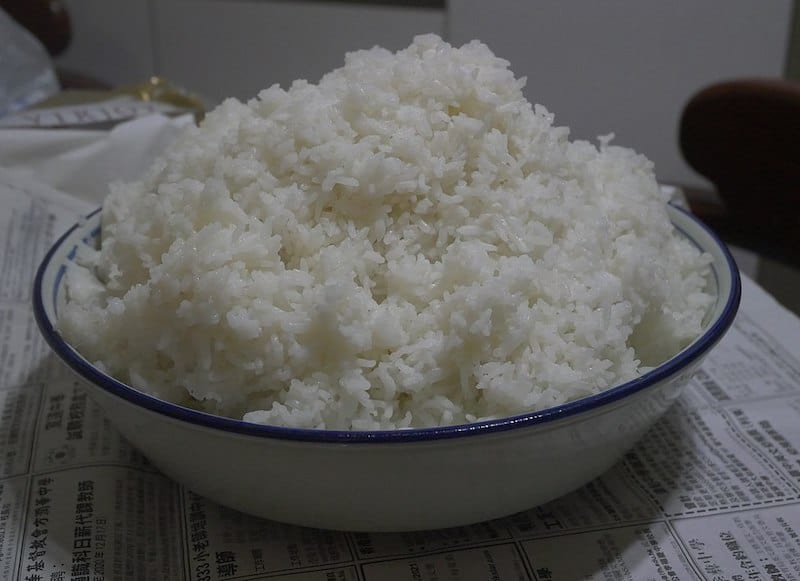Should Sushi Rice Be Hot or Cold?
It can be argued that sushi rice is more of a cooking method than an actual type of rice. Short-grain Japanese white rice is the ideal type of rice to use for sushi, and once cooked, it’s seasoned with sugar, salt, and vinegar.
But should sushi be made with sushi rice that’s hot or cold? Sushi rice that is “perfect” is neither hot nor cold! Instead, it should be relatively cool, ideally room temperature.
In this article, I’ll discuss the best temperature of sushi rice to make sushi.
Do You Use Hot Rice to Make Sushi?
Sushi should never be made with hot rice.
Certain grain, consistency, and temperature must be met for sushi to be considered “perfect.” Therefore, sushi chefs frequently advocate using cool (rather than cold) rice or “shari” at room temperature.
Using rice that isn’t too hot or too cold helps you to get the best flavor and texture from the “net” or the sushi topping or other sushi ingredients.
This is particularly true when using cold, raw seafood in sushi.
Using sushi rice that’s cold will taste salty and lose its vinegary flavor.
Why Can’t You Use Warm or Hot Rice to Make Sushi?
The main reason you can’t use hot sushi rice is its texture.
Short-grain rice is used for sushi rice, and when hot, it can be very sticky and clumpy. This makes it hard to make sushi rolls. You want the rice to be firmer but hold together.
On the other hand, cold rice hardens the starches, making them hard and missing the correct texture to complement the fish.
Moreover, the rice should be at room temperature for the aromatics and rice to really open up.
Do You Let Rice Cool Before Making Sushi?
Yes, you should.
To keep the rice from drying out, put the cooked rice in a mixing bowl and cover it with a damp towel touching the rice’s surface.
Let the rice cool on the counter or in the fridge until it reaches a temperature close to room temperature (roughly 71° Fahrenheit).
How to Cool Sushi Rice Quickly
If you don’t have the time to wait for sushi rice to cool and you are unsure about chilling it in the fridge, here’s what you can try:
Step 1. It’s best to use a wooden rice tub or a large, flat-bottomed bowl that isn’t made of metal. You can also use a 13×9-inch glass casserole plate for this purpose. This is essential: Place the rice in a broad, shallow container.
Step 2. Slice the rice across the bowl using a flat wooden paddle instead of stirring it in the same direction as the grain.
Step 3. Slowly drizzle the vinegar dressing over the rice, making sure to leave some room in the middle.
Step 4. Using a slicing motion, lift and mix the rice with the paddle as before.
Step 5. While you’re doing this, you can either use an electric fan or a hand-held fan. Put the fan on the “blow” or “cool” setting to avoid more heat.
Step 6. Put the rice in a rice holder.
Step 7. Spread a damp piece of cheesecloth over the top to keep the rice from drying out.
In this way, the rice will cool quicker because of the wide surface, and you’ll still easily monitor the temperature.
How Cold Should Sushi Rice Be?
As mentioned before, the ideal temperature is room temperature. Or, to be more specific, roughly 22° Celsius or 71.6° Fahrenheit.
It doesn’t have to precisely fit these measurements. Use your own judgment to decide when it’s ready to make sushi. Just bear in mind not to let the rice cool down too much.
Do You Season Sushi Rice Hot or Cold?
Sushi rice should always be seasoned when hot.
Immediately after the rice is cooked, transfer it to a large mixing bowl and start seasoning.
It’s common to use a silicone spatula for this phase, but you can also use a wooden hangiri and a rice paddle for a more traditional approach.
Pour the sushi vinegar evenly over the rice in a large mixing basin and stir thoroughly.
Then, fold the rice with a spatula until the vinegar has adequately been distributed and some early steam evaporates.
Fluff up the mixture with your hands after it has cooled down sufficiently to be handled.
Then you can add all the other seasoning that goes into sushi rice.
Sushi rice is traditionally made with granulated sugar, found in most supermarkets. You can, however, use your preferred natural sweetener instead.
Sugar is used to offset the sourness of the vinegar. Besides sugar, you also add a bit of salt to enrich the aromas.
A small sheet of kombu (dried seaweed) can be added while the rice is cooking to give it a characteristic umami flavor, but this is optional.
In Summary
The temperature of the sushi rice is crucial for a couple of reasons.
First, cooking the rice al dente (firm but not crispy) is the primary objective. This helps avoid mashing the sticky rice when stirring (hence the gentle slicing/folding procedure instead of simply going in circles).
Rather than being compressed into a single grain, good sushi rice should be glossy and polished to an even sheen. You may rest assured, though, that no matter how your rice turns out, sushi will be a tasty success!
Rice cookers and instant pots are the easiest and most reliable ways to cook short grain rice, which can be finicky at times.
Cooking on a stovetop is another option, but keep in mind that the cooking time can vary depending on the type of burner you have, so make sure your rice is fully cooked before turning off the heat source.







